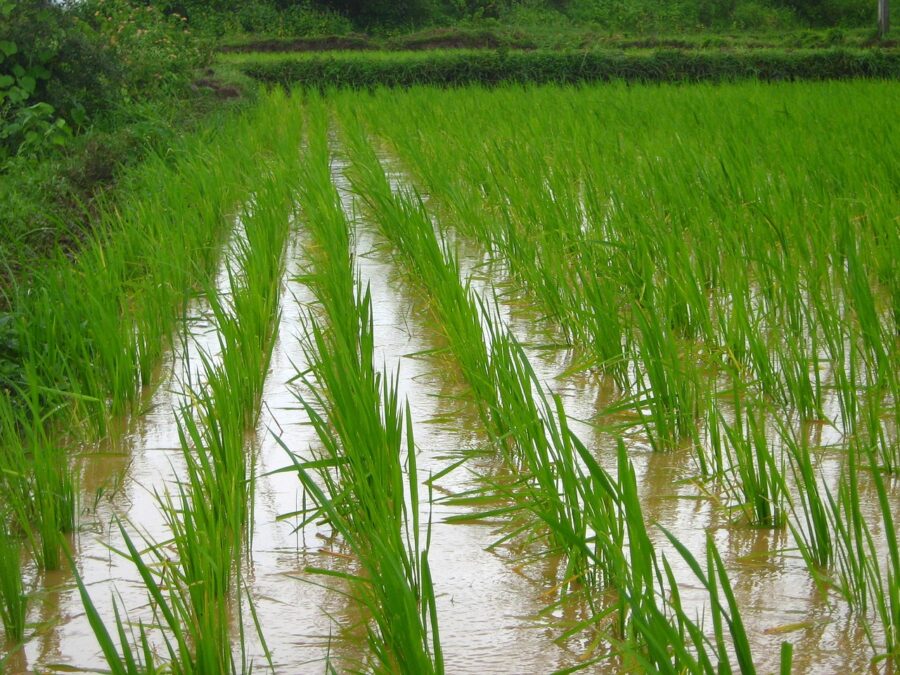In talks with US President Joe Biden, Indian PM Narendra Modi mentioned India could feed the world.
Furthermore, the Ukraine war has added to the 10-year high in commodity prices due to global harvest issues.
As per the UNFAO food-price index, commodity prices soared after the war while being at their highest since 1990.
India aims to feed the world amid supply shocks and rising inflation
PM Narendra Modi said India had “enough food” for its 1.4 billion people, and it was “ready to supply food stocks to the world from tomorrow” if the WTO allowed.
Rome-based economist at UNFAO Upali Galketi Aratchilage says, “the supply disruptions and threat of embargo facing Russia means that these exports have to be taken out of the equation.”
“India could step in to export more, especially when it has enough stocks of wheat.”
Furthermore, the world’s major wheat exporters are Ukraine and Russia.
They account for a third of global annual wheat sales.
Nevertheless, India is the second-largest producer of wheat and rice globally.
As of April, 21 million tonnes of the 74 million tonnes of wheat and rice belongs to the strategic reserve and PDS.
The reserve and PDS allow over 700 million below-par people to access cheap food.
How can India meet global food needs?
As per a professor of agriculture at the Indian Council for Research on International Economic Relations, Ashok Gulati, India, can export 22 million tonnes of rice and 15 million tonnes of wheat this fiscal year.
He said, “If the WTO allows government stocks to be exported, it can be even higher.”
“This will help cool the global prices and reduce the burden of importing countries around the world.”
Furthermore, India is one of the cheapest exports of wheat and rice globally.
India exports rice to approximately 150 countries and wheat to 68.
Additionally, in 2021-22 farm exports surpassed a record of $50bn and exported nearly 7 million tonnes of wheat.
As per officials, traders have entered contracts for exports of more than 3 million tons of wheat from April to July due to rising demand.
What are the risks of India feeding the world amid rising inflation?
A senior fellow at the Centre of Policy Research, Harish Damodaran, says, “we have enough stocks at the moment.”
“But there are some concerns, and we should not become gung-ho about feeding the world.”
While officials predict a record 111 million tonnes of wheat harvest action, Mr. Damodaran seems unconvinced.
He believes excessive rains, severe heat, and fertilizer shortage could lead to a much lower yield.
He said, “we are overestimating the production.”
“We will know in another 10 days.”
Impact of the geopolitical crisis on India’s aim to feed the world
Experts further question the lack of fertilizers, being the essential component of farming.
Furthermore, fertilizer prices have soared due to a hike in gas prices.
Additionally, India’s stocks have dipped since the war as it exports di-ammonium phosphate and fertilizers containing nitrogen, sulphur, potash, and phosphate.
However, Belarus and Russia account for 40% of the world’s potash exports.
The hike in fertilizer prices could severely damage the next season’s production.
However, Mr. Damodaran suggests India explore “wheat-for-fertilizer deals” with countries like Egypt and Africa.
As per UNFAO, the world’s major wheat exporters are Russia and Ukraine.
Together they account for a third of global annual wheat sales and 55% of global annual sunflower oil exports.
Additionally, Ukraine and Russia had to export 14 million tonnes of wheat and over 16 million tonnes of maize this year.
Impact of the Russian invasion
India hit 16-month high food inflation of 7.68% in March.
Commodity prices soared, including vegetables, edible oils, meat, fish, milk, and cereals.
Furthermore, India’s central bank warned about “elevated global price pressures in key food items,” leading to “high uncertainty” over inflation.
Additionally, as the war prolongs, India will face logistical issues continuing with exports.
Mr. Aratchilage says, “exporting huge volumes of cereals involves huge infrastructure like transportation, storage, ships.”
“Also the capacity to start shipping in high volumes.”
There is also the question of higher freight costs.
As per IFPRI, the Russian invasion is likely to have “serious consequences” for global food security.
Moreover, the UNFAO estimates the prolonged disruption in exports from Russia and Ukraine of commodities, fertilizers, and wheat could soar undernourished people from eight to 13 million globally.
India’s food crisis
As per the governments’ admission, over 3 million children remain undernourished in India despite excessive crops and ample food stocks.
Mr. Damodaran said, “you cannot be cavalier about food security.”
“You cannot play around with the food earmarked for the subsidized food system.”
Lastly,
While India aims to feed the world, various factors like inflation and the prolonging Russian Invasion hinder exports.
Also Read – PM Modi offers President Biden India’s food stock

1 Comment